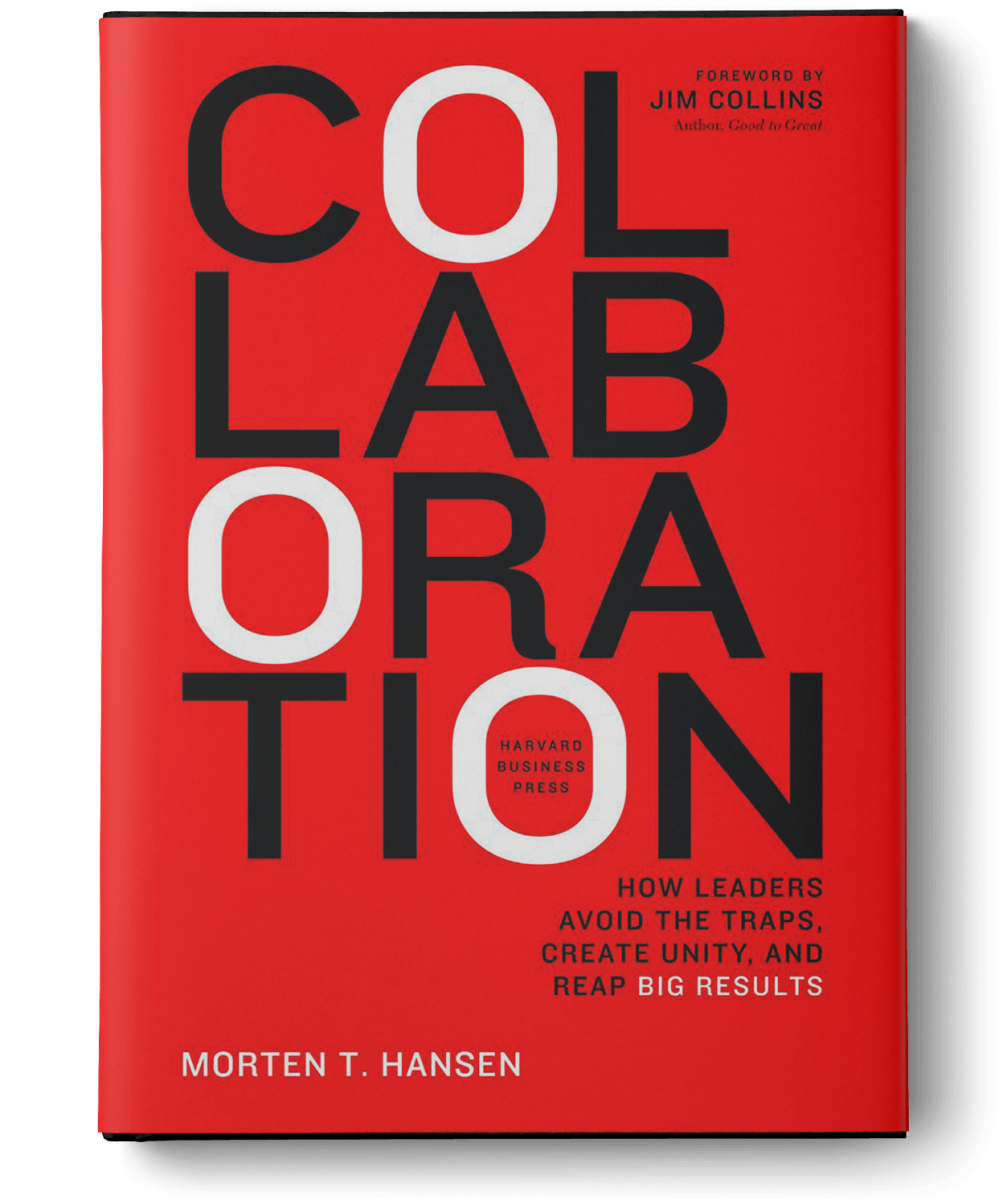
Collaboration: How Leaders Avoid the Traps, Build Common Ground, and Reap Big Results
by Morten T. Hansen. Harvard Business Review Press (2009). 256 pages.
US$26.95 (hardcover). ISBN: 978-1-4221151-5-2
Reviewed by Larry Mallak, Ph.D., Fellow, ASEM; Professor, Western Michigan University
If you need a resource on how to improve collaboration in your organization, skip the airport books. Save yourself the hassle of poring through countless journal articles that explore one small set of variables in a constrained setting or geography. Morten Hansen has been studying collaboration ever since he conducted his doctoral research at H-P in the mid-1990s. Along the way, he has taken an engineering approach to collaboration, despite his B-school cred that would suggest otherwise.
Many of us engineers and engineering management types like to use analytical and quantitative techniques when we investigate a problem, even a social science problem. Ever since I read Ellen Langer’s “The Illusion of Control” while working on my master’s thesis at Virginia Tech, I’ve also become intrigued by the use of informal analytical techniques—essentially engineering estimation—applied to social science-based problems. Langer’s work got me thinking about the false uniformity of precision garnered by highly-quantified models and techniques, such as operations research and other forms of mathematical modeling. Not that there’s anything wrong with that, as Seinfeld would say. It’s just that when we want to achieve better outcomes in our organizations, we can’t wait for big modeling efforts or wade through complex mathematical models that may or may not match the assumptions of our workplaces. We need to “Pareto” to a few better outcomes, rather than strive for the optimal outcome.
Which brings us to Hansen. Rather than drag us through highly-constrained models, Hansen offers a few “back-of-the-envelope” simulations to make his points regarding how to improve outcomes with disciplined collaboration. He bashes popular business myths with data from case studies and formulates business-y equations that make sense to those of us seeking to make change now. For example, he dispels the notion that networking is always good and that those who have the largest number of contacts are in the best position. He even acknowledges that Gladwell makes this statement in his classic “The Tipping Point.” However, Hansen argues that those with many contacts often spend far more time cultivating those relationships rather than using the network to solve problems and “bridge” to necessary information. He calls these people “butterflies,” because they flit from one place to another without accomplishing a whole lot. At the other extreme, “lone stars” are self-appointed heroes who single handedly solve problems, not asking for, looking for, or accepting help from others.
Hansen calls for “T-shaped” managers; these are managers who “simultaneously deliver results in their own job (the vertical part of the ‘T’) and deliver results by collaborating across the company (the horizontal part of the ‘T’)” (Hansen, 2009, pp. 95-96). Southwest Airlines uses this concept when applicants are asked to stand up and read a short statement about themselves. Those who support others through listening, paying attention to them, and cheering are considered aligned with the Southwest culture. Many applicants think it’s merely a public speaking test.
A collaborative leader, according to Hansen, believes in and role models three distinct behaviors:
- Redefining success by tying smaller tasks to larger goals,
- Involving others and keeping an open mind to new ideas, and
- Being accountable and holding others accountable, rather than blaming them.
Hansen shares a case study of Arnold Schwarzenegger and how he used these behaviors in his role as governor of California.
Rather than just sharing his insights and wishing us well, Hansen includes several tools in this book that can be used to build better collaborations. He has a companion “Collaboration Toolkit” that can be purchased separately. Some of the tools are contained in his book and can be readily used. However, if you want a more detailed analysis of collaboration and have a decent budget, the toolkit may be the way to go.
Collaboration doesn’t have to be a mysterious concept that stays conceptual. With Hansen (and others), we can take tangible steps to improve how we lead, follow, and participate in collaborative efforts.
References
Hansen, M.T. 2009. Collaboration: How Leaders Avoid the Traps, Create Unity, and Reap Big Results. Boston, MA: Harvard University Press.
Hansen, M.T. 2019. The Collaboration Toolkit: Tools adapted from the Book "Collaboration: How Leaders Avoid the Traps, Create Unity, and Reap Big Results." [Available: https://hbsp.harvard.edu/product/1463TK-PDF-ENG].
About the Author
 Dr. Larry Mallak is an industrial engineer whose work on corporate ethnography is bringing new tools to balance the art and science of new product development. He’s a Professor of Industrial and Entrepreneurial Engineering & Engineering Management at Western Michigan University. Prior to his university appointment, he worked in Charlotte, North Carolina, for Premier Healthcare and he has worked as a science reporter for National Public Radio. His work has been featured in numerous outlets, including TEDx, Engineering Management Journal, WORK, and Industrial Management. He holds Ph.D. and M.S. degrees in Industrial & Systems Engineering from Virginia Tech, with a B.S. in Industrial Engineering from the University of Illinois. Dr. Mallak is a Fellow of ASEM.
Dr. Larry Mallak is an industrial engineer whose work on corporate ethnography is bringing new tools to balance the art and science of new product development. He’s a Professor of Industrial and Entrepreneurial Engineering & Engineering Management at Western Michigan University. Prior to his university appointment, he worked in Charlotte, North Carolina, for Premier Healthcare and he has worked as a science reporter for National Public Radio. His work has been featured in numerous outlets, including TEDx, Engineering Management Journal, WORK, and Industrial Management. He holds Ph.D. and M.S. degrees in Industrial & Systems Engineering from Virginia Tech, with a B.S. in Industrial Engineering from the University of Illinois. Dr. Mallak is a Fellow of ASEM.
